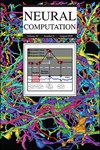Pulse Shape and Voltage-Dependent Synchronization in Spiking Neuron Networks
IF 2.1
4区 计算机科学
Q3 COMPUTER SCIENCE, ARTIFICIAL INTELLIGENCE
引用次数: 0
Abstract
Pulse-coupled spiking neural networks are a powerful tool to gain mechanistic insights into how neurons self-organize to produce coherent collective behavior. These networks use simple spiking neuron models, such as the θ-neuron or the quadratic integrate-and-fire (QIF) neuron, that replicate the essential features of real neural dynamics. Interactions between neurons are modeled with infinitely narrow pulses, or spikes, rather than the more complex dynamics of real synapses. To make these networks biologically more plausible, it has been proposed that they must also account for the finite width of the pulses, which can have a significant impact on the network dynamics. However, the derivation and interpretation of these pulses are contradictory, and the impact of the pulse shape on the network dynamics is largely unexplored. Here, I take a comprehensive approach to pulse coupling in networks of QIF and θ-neurons. I argue that narrow pulses activate voltage-dependent synaptic conductances and show how to implement them in QIF neurons such that their effect can last through the phase after the spike. Using an exact low-dimensional description for networks of globally coupled spiking neurons, I prove for instantaneous interactions that collective oscillations emerge due to an effective coupling through the mean voltage. I analyze the impact of the pulse shape by means of a family of smooth pulse functions with arbitrary finite width and symmetric or asymmetric shapes. For symmetric pulses, the resulting voltage coupling is not very effective in synchronizing neurons, but pulses that are slightly skewed to the phase after the spike readily generate collective oscillations. The results unveil a voltage-dependent spike synchronization mechanism at the heart of emergent collective behavior, which is facilitated by pulses of finite width and complementary to traditional synaptic transmission in spiking neuron networks.尖峰神经元网络中的脉冲形状和电压相关同步性
脉冲耦合尖峰神经网络是一种强大的工具,可以从机理上深入了解神经元如何自我组织以产生连贯的集体行为。这些网络使用简单的尖峰神经元模型,如θ神经元或二次积分-发射(QIF)神经元,复制了真实神经动力学的基本特征。神经元之间的相互作用是通过无限窄的脉冲或尖峰来模拟的,而不是真实突触的更复杂动态。为了使这些网络在生物学上更加合理,有人提出它们还必须考虑到脉冲的有限宽度,因为这可能对网络动力学产生重大影响。然而,对这些脉冲的推导和解释是相互矛盾的,脉冲形状对网络动力学的影响在很大程度上也未得到探讨。在这里,我采用一种全面的方法来研究 QIF 和 θ 神经元网络中的脉冲耦合。我认为窄脉冲能激活电压依赖性突触电导,并展示了如何在 QIF 神经元中实现窄脉冲,使其效应能持续到尖峰之后的阶段。通过对全局耦合尖峰神经元网络进行精确的低维描述,我证明了在瞬时相互作用中,由于平均电压的有效耦合,会出现集体振荡。我通过一系列具有任意有限宽度、对称或不对称形状的平滑脉冲函数,分析了脉冲形状的影响。对于对称脉冲,所产生的电压耦合在同步神经元方面并不十分有效,但对尖峰后相位略有倾斜的脉冲则很容易产生集体振荡。这些结果揭示了一种依赖电压的尖峰同步机制,它是突发性集体行为的核心,有限宽度的脉冲促进了这种机制,并与尖峰神经元网络中的传统突触传递相辅相成。
本文章由计算机程序翻译,如有差异,请以英文原文为准。
求助全文
约1分钟内获得全文
求助全文
来源期刊

Neural Computation
工程技术-计算机:人工智能
CiteScore
6.30
自引率
3.40%
发文量
83
审稿时长
3.0 months
期刊介绍:
Neural Computation is uniquely positioned at the crossroads between neuroscience and TMCS and welcomes the submission of original papers from all areas of TMCS, including: Advanced experimental design; Analysis of chemical sensor data; Connectomic reconstructions; Analysis of multielectrode and optical recordings; Genetic data for cell identity; Analysis of behavioral data; Multiscale models; Analysis of molecular mechanisms; Neuroinformatics; Analysis of brain imaging data; Neuromorphic engineering; Principles of neural coding, computation, circuit dynamics, and plasticity; Theories of brain function.
 求助内容:
求助内容: 应助结果提醒方式:
应助结果提醒方式:


